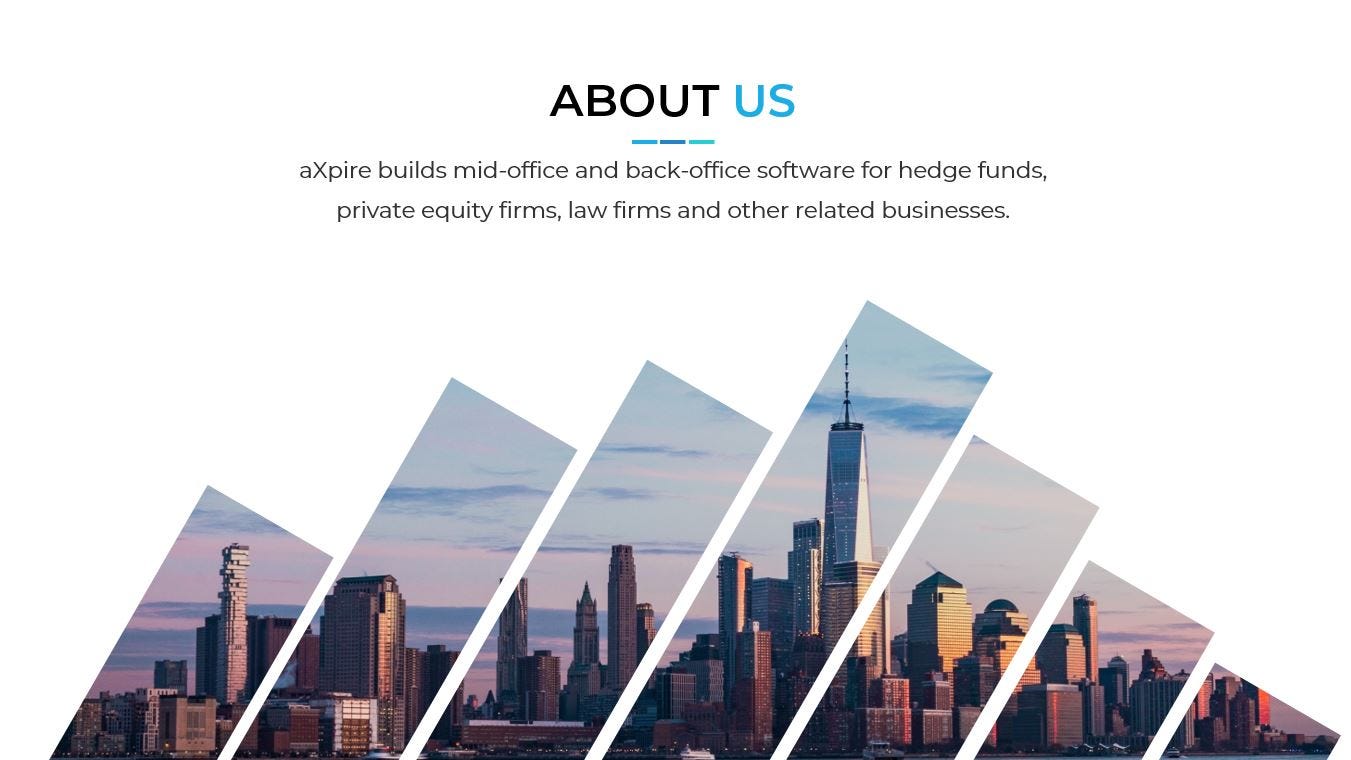The way a business’s website is made can make or break it. By using the right website design tips, you can make your site look great and get people to do what you want them to do. If your website is well-designed, you will get more visitors and make more sales.
not It’s as easy as it might seem to make sure your website looks good. A great design is the result of diligent planning. When it comes to graphic design for your website, there are a lot of tips and best practices to keep in mind. You can’t just think about how the website looks. You have to think about the whole journey and experience of the visitor.
This is very important if you want to get more sales. We’ve put together a list of 21 important website design tips that will help your site stand out and turn more visitors into customers.
1. Start with a clear, consistent brand.
Branding is the most important part of any good web design. Before you can even start designing your website, you need to figure out your brand. Branding that is clear and high-quality may seem like one of the most obvious website design tips, but many people don’t pay enough attention to it. Your visual branding will be used on your website, in social media, and anywhere else your brand is present. It will be the center of your website’s design, and it will affect every button, image, color choice, and so on. Visual branding includes things like your logo, color palette, font, and even a mood board that shows what your brand is all about. You can get started quickly by using a logo maker.
This branding needs to be consistent and have a clear look that will be used throughout the site. Before you move on to the rest of your website design, you should fix your visual branding if you’re not happy with it.
2. Use images of good quality.
The quality of your website design depends on the images you use. You could have beautiful branding and well-thought-out UX design, but if your images are bad, it will ruin the whole experience of your website. Hire a professional photographer to take high-quality headshots, and whenever possible, use unique images. If the photos aren’t good enough, you can always use stock photos instead. Be very careful, though. Don’t just take pictures from a site with free stock photos. Make sure your stock photos are different and fit with your brand.
Even your photos should fit in with the colors and style of your visual brand.
You don’t need many photos on a website, but when you do, make sure they’re of good quality. These are some of the most important visual parts of any website, so you need to make sure they stand out.

3. Put video on your website.
Video is just as important as pictures. Video has a big impact online, and using it in web design is becoming more popular than ever.
Video is one of the most interesting types of visuals, and it can be used in many ways to help design websites. This could be done with the help of a customer review, a product demo, an introduction to your business, or other things. These videos give visitors more information in a way that is easy to understand. By adding videos to your website, you also give it more movement. Movement helps the design as a whole to stand out. You only need one or two high-quality videos spread out across your website to make an impact.
4. Keep your writing short and interesting.
Even though copywriting is not the same as graphic design, it still takes up space on a website and makes it look better. Don’t just think about what the words say when you write copy for your website. You should also think about how the text will look in your final design. The main point is that you should keep your copy short and to the point. When people visit your website, they should be able to figure out what you’re trying to say. They shouldn’t have to stop and take time to read and understand what’s being said. Basically, your words and images need to go together to make a design that makes sense.
For example, if your homepage has four sections stacked on top of each other, each section should have the same number of lines of text. If one section is twice as long as it should be, it will change how the website looks. So, think about not only what your web copy will say, but also how it will look. This is one of the web design tips that people often forget.
5. Accept the blank space.
Any good web designer knows that white space is just as important as graphics. It’s very important for the user experience of your website to have a good balance of empty space. This makes it easier for people to find their way around your website and helps your most important visual elements stand out. There’s really no reason to make your website too hard to use or add too many visual elements. Blank space is a very important part of design, and you should make the most of it.
Just look at Google. They’re the best example of how to use empty space to make their website better.
6. Put in some movement and animation.
One of the best tips for building a website is to keep it alive. It’s not like a book, where each page stays the same. Users want to interact with your website, and they want it to be fun for them to do so.
time It’s to start adding small animations and movements if you haven’t already. This should be subtle enough not to be distracting, but there should also be enough movement to keep your site alive.
So, one of the best things you can do when designing a website is to think about movement and animation when putting together images. Simple movements on a website can make a big difference in how the user feels and can really make the design stand out. And there are still a lot of websites that don’t change. Your website will stand out a lot more if it has some movement.
7. Make sure it’s clear what you’re selling.
Your website needs to do something in particular. If your site is confusing in any way, people will leave right away.
Part of a web designer’s job is to show what a website is about without having to use words. Visuals on a website should tell a story just like the text on the site does. This will make the visitors’ experience much clearer.
Don’t use pictures on your website that have nothing to do with what your business is about. If you use pictures that have nothing to do with what your business does, it could confuse your visitors and ruin their time on your site.
So, don’t simply make your website design appear amazing, it also needs to make sense. Connect the words and pictures in a clear way to make a website that works well together.
8. Think about using maximalism.
When it comes to web design tips, minimalism is a great way to go, but maximalism can also work really well, depending on your business. Maximalism is all about using big, bold colors and images that look aggressive.
This style of design doesn’t work for everyone, but if it fits your business, it could make a big difference. Maximalism makes you stand out and help people remember you. Sometimes it’s best to ditch the usual web design tips that focus on minimalism and try something more daring. If it’s done right, it could pay off.
9. Keep your site up-to-date.
It goes without saying that you have to keep your website up to date all the time. You could have a beautiful website that uses all the best tips for web design, but this could go out of style quickly. Online, things change quickly, so you need to make sure that your website keeps up.
Remember that your website shows what your business is like. If your web design isn’t up-to-date, your business will look old, too.
Make it a habit to update your website often. Keep up with the latest design trends, check out what your competitors are doing, and make sure your website is up to the same level.
10. Don’t use stock photos that look too much like other stock photos.
Stock photos are a big part of how most websites are made. One of the most important design tips is to use high-quality original photos, as we already said. Always try to hire a photographer to take photos that are different from the rest. This isn’t always possible, though.
It’s fine to use stock photos as long as they look like they were taken just for you. You can tell right away when a business uses stock photos that are all the same, and this won’t help your site. Spend time looking for the right stock photos, and make sure they fit with your brand and look. And it’s always best to pay for high-quality stock photos. Yes, these are more expensive, but they look better and are much more unique. Stock photos are usually not very expensive, so it’s best to get the best quality you can.
11. Put your value proposition on your menus.
Customizing the navigation tiles and menus is a good way to stand out in your niche. This may seem like a small piece of web design advice, but it can make a big difference between websites that are static and those that are dynamic.
For example, you could use the word “learn” instead of “classes.” This shows how useful the classes are, and it makes your website stand out from all the other “classes” websites. This is a small web design tip, but it could help you get a lot more sales and stand out from your competitors.
12. Put the focus on the user.
One of the most important things to keep in mind when designing a website is the user. Don’t make your website about you; instead, make it for the people who will use it. Every part of your website should tell your users what they’re looking for.
Know who you’re helping, what problems they have, and what they want to know. This means that you shouldn’t just think about web design that looks good; it should also speak to your users. Always use the images and visuals that these users want to see.
And of course, ensure your design is suitable for mobile. Most of your site’s traffic will come from mobile devices, so it’s important to make sure your design works well on those. Make sure that the mobile version of your site is useful for everyone with a small screen.
13. Make your site easy to scan.
Most people who visit your site will want to quickly scroll through it. The information you show should be easy to read and set up so that it can be quickly scanned. This will depend a lot on the pictures you use.
Of course, the headlines and copy should be clear and to the point, but the design of the website should also reflect this. The pictures, colors, and other visual elements on a website should all tell the story of the site and be easy to understand at a glance.
If the images and media on the site are too busy and hard to understand, people will quickly leave. So, keep images simple, show how they relate to the text, and place them in a way that makes them easy to scan and understand.
14. Use well-known ways of doing things.
There’s a reason why most websites have the same basic design layout. This is the case because it works. How often do you see navigation at the top, sidebars on the right, and footers at the bottom? A good website doesn’t make people think too much. Instead, they know how to use the site just by looking at it. This is because they use well-known rules.
In web design, it’s good to think outside the box, but you should also stick to what you know works. So, if you want your visitors to do what you want them to, you should stick to website rules that have been shown to work. Your website visitors will feel more at ease, and you will be able to get them to do what you want.
15. Use Great Typography
Typography is a big part of how websites are put together. One of the most important web design tips is to carefully choose your typography. Before you make a website, you should decide this in your visual branding. However, you will soon see that websites use many different types of fonts.
The different typography options need to work perfectly with each other. Some fonts go well together while others don’t, so it’s important to know which ones do. And when you choose your fonts, make sure they look the same throughout your whole website.
16. Micro-actions should be encouraged.
When you think about responsive web design, you should start with micro-actions. The idea is that people who visit your website will do a lot of small things, not just one big thing. Web designers who work with graphics need to understand this idea and make sure that all visual elements encourage these small actions.
For example, let’s say a user lands on a homepage. The next small step could be to get them to scroll past the fold. Then, the next micro action could get them to click on a link that takes them to a different part of the website. These actions lead to a long list of possible next steps, and they need visual cues to help them decide.
When making a website, make sure you know the small steps you want the user to take and show them how to get there with pictures. If you don’t consider this when making your plan for responsive web design, the website could be hard to use. It also might not help you achieve the right results.
17. Make CTAs Clear
The Call to Action (CTA) is one of the most important parts of any website page. A call to action is made up of two parts. These are the words on the CTA and how it looks.
In the end, the goal of a CTA is to get people’s attention and get them to click on it. This button tells the visitor what you want them to do, as the name suggests. This could be to book a demo, to check your prices, to get in touch, or anything else. It’s an important part of making your site responsive.
We won’t talk about how to write a good call to action (CTA), but we will talk about how these buttons look. Calls to action (CTAs) need to stand out, be easy to find, and be clear. If you want people to click on these buttons, you should make them stand out. In web design, a good call to action (CTA) should be a solid, bright color that stands out from the background. It should be big enough to draw attention but small enough to keep things simple. The user should also be able to tell right away what the message is.
At the end of the day, your website and web design are there to draw people in and get them to do something. If your calls to action (CTAs) don’t work, your website won’t have good conversion rates.
18. Think about color psychology.
Colors are more than just pretty to look at; they also have deeper emotional meanings. What about color psychology? This is the idea that different colors portray different feelings and emotions. This means that different colors can make people act in different ways. Make sure that your brand and website are using the right color palette for good web design. When putting together a website, a web designer should think about how color affects people. This could make a big difference in how your site visitors think of your brand and what actions they take.
For example, blue tones tend to make people feel calm, while red tones tend to make people feel more energized and excited. Both of these associations with color are good, but in different ways. Think about which one would fit your brand the best and help people do what you want them to do. This can be brought into every element of your website design.
Of course, you should think about color psychology when creating your brand and visual identity. But when you design new landing pages or add new elements to your website (like popups or new buttons), it’s important to think about color psychology and how this might affect your users.
19. Information and Visual Hierarchy
Visual hierarchy is an important part of making a good website. Visual hierarchy is when you arrange different elements in a certain way to show their importance.
For example, the biggest and brightest part is the first thing you notice, so it should be the most important. In web design, visual hierarchy also works by putting the most important information at the top of the page and the less important information further down.
When it comes to web design, designers need to understand which information is most important and arrange this accordingly. What you want people to see first on your website should be eye-catching and stand out from the rest. If web designers make the most important information blend in with the rest of the content, visitors might not know what to look at. Visitors might also be confused as to where to navigate or what actions to take.
So, focusing on information and visual hierarchy is one of the most important web design tips to help your website look and perform better.
20. Make it easy to use landing pages.
While you might need to add quite a lot of information to your website, your landing pages should be clear and simple. Each landing page should serve a very specific purpose and try to get users to do only one thing. This means that the visual parts of landing pages should be kept simple.
Don’t overcomplicate landing pages with too many visuals, colors, and images. For a more responsive design, make sure that they are short and easy to understand. When the user lands on the page, they should know right away what it’s about and what they should do next.
Creating a landing page should be easy, and it should all be about the main call to action (CTA). So, for landing pages, think about what we’ve talked about so far about white space, designing around copy, and CTAs.
21. Add social proof to your design.
One of the most important tips to help you improve your user experience is to incorporate social proof into your design. Social proof is an important part of digital marketing, and you should keep it in mind when making your website. This is important for building trust and credibility and getting the attention of your visitors. Any web designer should always be looking for ways to include this in their work. This could be done in a number of ways, such as through reviews, trust badges, testimonials, user videos, etc.
Conclusion
There’s a lot that goes into making a website. When putting together your website, you need to be careful with the design and think about a lot of different things. Following the tips above will make a big difference to your site.
If all of these ideas sound great, but you don’t know where to start, you might want to hire professional web designers to help you get started.
Markustudio a freelance Web Designer in Manchester providing web design, logo branding, print, SEO and digital design services. We have a passion for serving successful small businesses and big brands across the uk. If you need help creating a style guide or staying consistent with your branding, our team of experts is here to assist you. We’ll work with you to create a unique and unforgettable brand that will help you stand out from the competition. Contact us today to get started!






